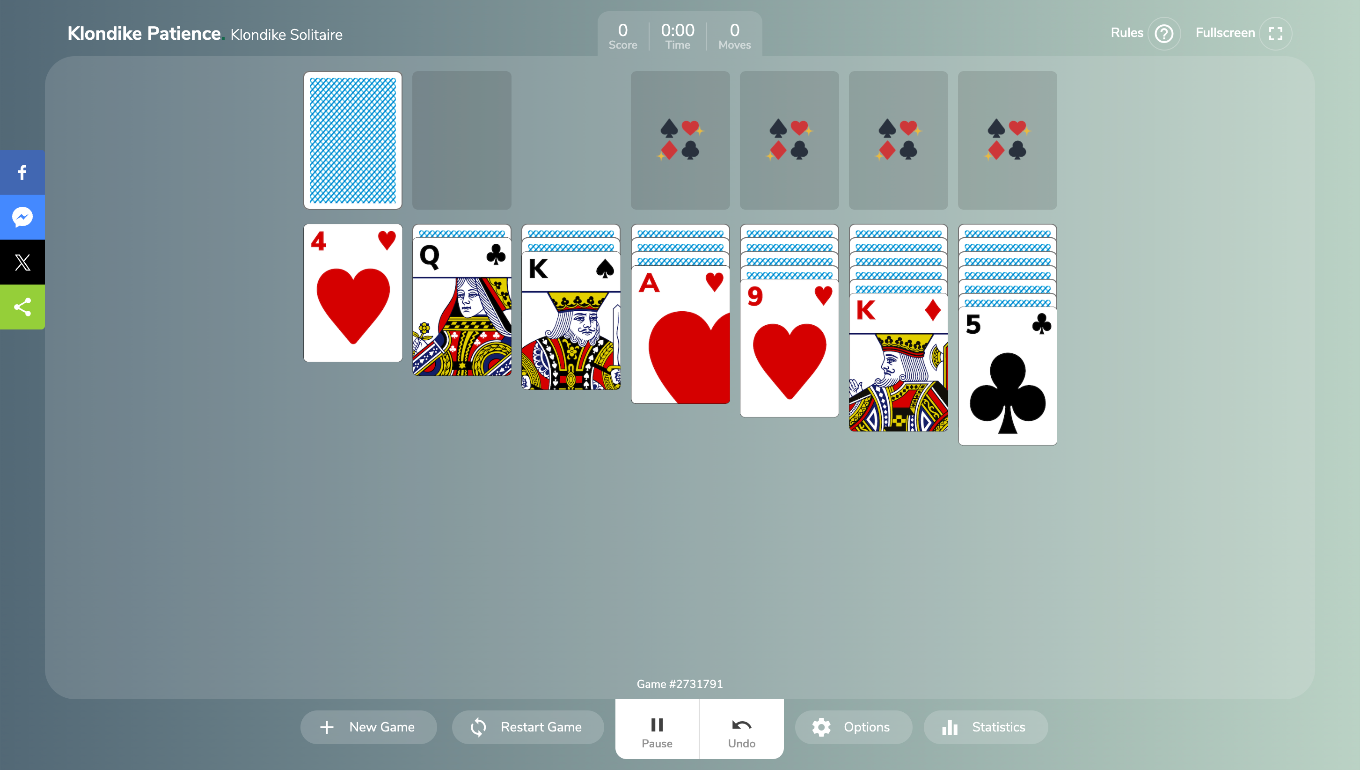KLONDIKE PATIENCE

Frequently Asked Questions
-
What is Klondike Patience?
Klondike Patience is the most popular variant of solitaire card games, also known simply as Solitaire or Patience. The goal is to move all 52 cards to four foundation piles, organizing them by suit in ascending order from Ace to King. It requires strategic thinking, patience, and careful planning to win.
-
Is Klondike Patience really free to play?
Yes, Klondike Patience is completely free with no hidden costs, subscriptions, or payments required. You can play unlimited games directly in your web browser without downloading any software or creating an account.
-
What is the difference between Turn 1 and Turn 3?
In Turn 1 mode, you draw one card at a time from the stock pile, making it easier with approximately 33% win rate. In Turn 3 mode, you draw three cards at a time with only the top card playable, making it more challenging with approximately 11% win rate.
-
Can I play Klondike Patience on mobile devices?
Yes, our Klondike Patience game works seamlessly on all devices including desktop computers, tablets, and mobile phones. The game automatically adapts to your screen size for optimal playing experience.
-
What are the basic rules of Klondike Patience?
Move cards in the tableau in descending order with alternating colors. Only Kings can fill empty columns. Build foundation piles in ascending order by suit from Ace to King. Draw cards from the stock pile when stuck. The game is won when all cards are moved to the foundation piles.
-
Why is it called Klondike Patience?
The name 'Patience' reflects the strategic thinking required to win. 'Klondike' traces back to the Klondike Gold Rush of the 1890s in Canada's Yukon Territory, where miners played this solitaire game to pass time during their difficult journey.
-
What is the win rate for Klondike Patience?
For Turn 1 mode, skilled players can win approximately 25-33% of games. For Turn 3 mode, the win rate is lower at approximately 10-11%. Even winnable games require careful strategy and sometimes multiple attempts to find the winning solution.
-
Do I need to download anything to play?
No download is required. Klondike Patience runs directly in your web browser. Simply visit our website and click play to start enjoying the game instantly on any device.

